Nokia was rightly proud, at the launch of the N86, that it boasted one of the largest camera sensors ever put into a phone - at the N8's launch Nokia went one further and claimed the outright crown. From N82 to N86 to N8, there's a distinguished lineage of camera specialist smartphones and it's tempting to pitch them head to head. Which I'll do, but with one slight tweak - comparing a 12 megapixel image to one from a 5 megapixel camera unit would be awkward in several ways, so I'm going to artificially 'downsample' the N86 and N8 output to the same 5 megapixels as on the N82 - that way I can compare images directly.*
* and yes, there will be a very slight degradation in the downsampling, but I think this is within the margins of acceptable error here, in this subjective piece!
In other words, I'm going to be comparing the (Carl Zeiss) optics and sensors directly - will it be possible to observe a gradual improvement, from 2007 to 2009 to 2011?
Test 1: Outdoors, normal light
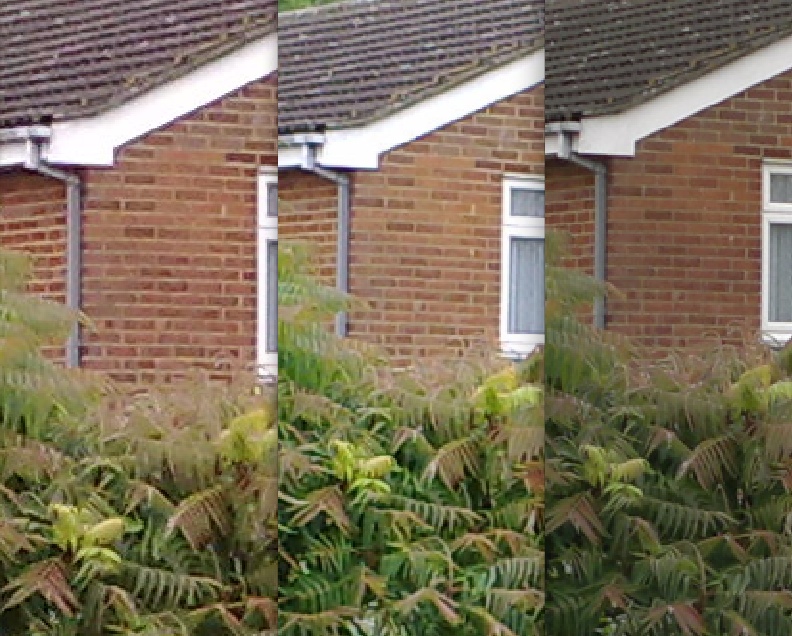
In this and each of the following images, I've taken the output from the N82, the N86 and the N8 from left to right, and cropped in far enough that differences in quality can be more easily seen. Annoyingly, the sun refused to 'play ball', so I was testing the three camera units here under overcast UK Autumnal skies. Still, plenty of distributed light around. The three phones' output is closer here than in the following images, but it's still possible to see progress from left to right: the N82 has significant digital artefacts, the N86 manages to capture more detail (within the 5mp limitation) and has warmer colours, but the N8's image wins out. Although it looks a little dim at first, there's more detail here (even after the downsampling), thanks to the absence of digital manipulation - look at the bricks, look at the guttering, look at the leaves to see what the more advanced N8 sensor (and associated electronics) manages.
Test 2: Outdoors, low light
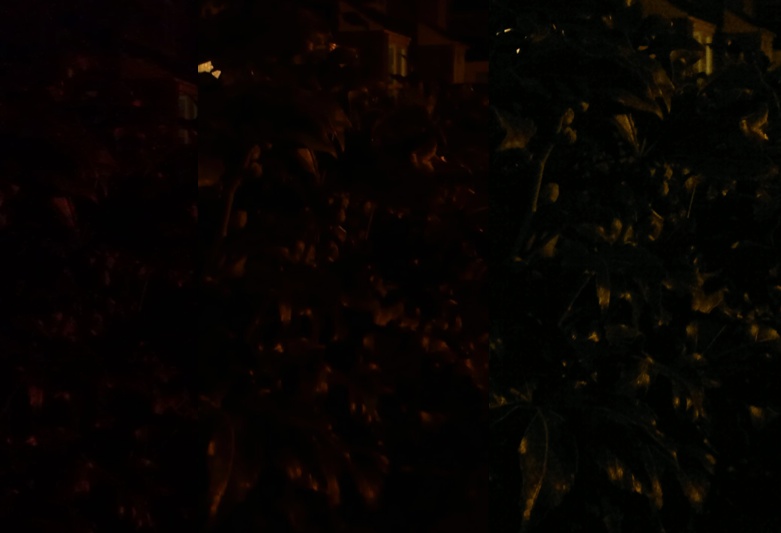
OK, very low light, just a few street lights around, and flash was disabled. In other words, an ultimate test of sensor sensitivity. I've cropped in by a factor of about 4. As before, going from left to right, you can see a very definite improvement, from the leaf detail and coloration, to the clarity of the lit windows in the house in the distance. And remember again that these are all comparisons at 5 megapixels - the N8 in particular can not only produce this level of improvement, but can do it at far higher resolution. An impressive evolution in sensor quality.
Test 3: Outdoors, flash enabled
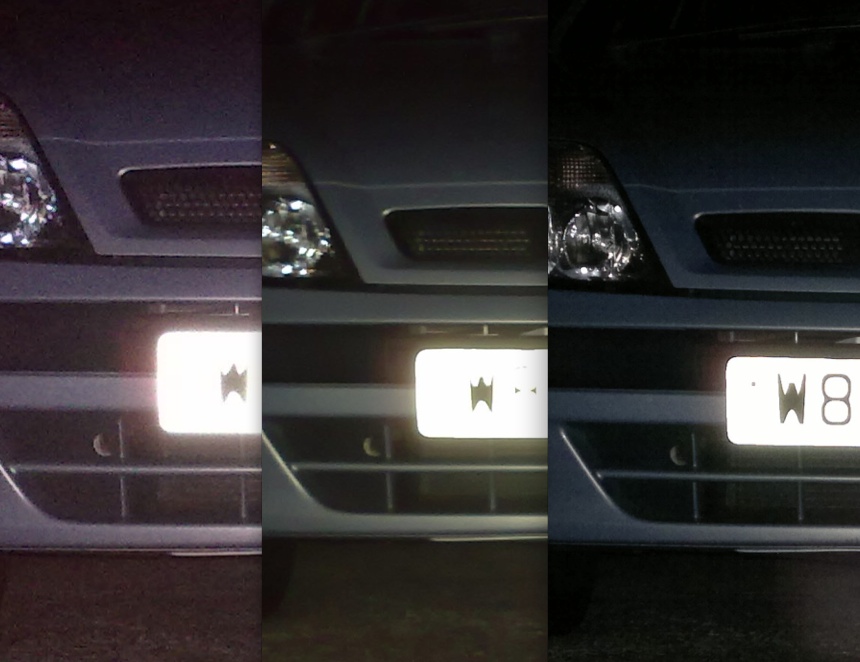
In this case, it was my car, parked in the pitch darkness about 3 metres away. Again, there's a clear evolution in quality from left to right. The N82 lights the car well enough but there's lots of digital noise, despite the intensity of the Xenon flash, and the number plate's blown out. The N86 smooths out the noise beautifully, but doesn't manage to focus properly - plus the number plate is again illegible. Finally, the N8 manages a superbly crisp image, despite having a weaker Xenon flash than the N82 - look at the detail inside the headlight panel. And you can read the number plate.
Test 4: Indoors, incandescent light
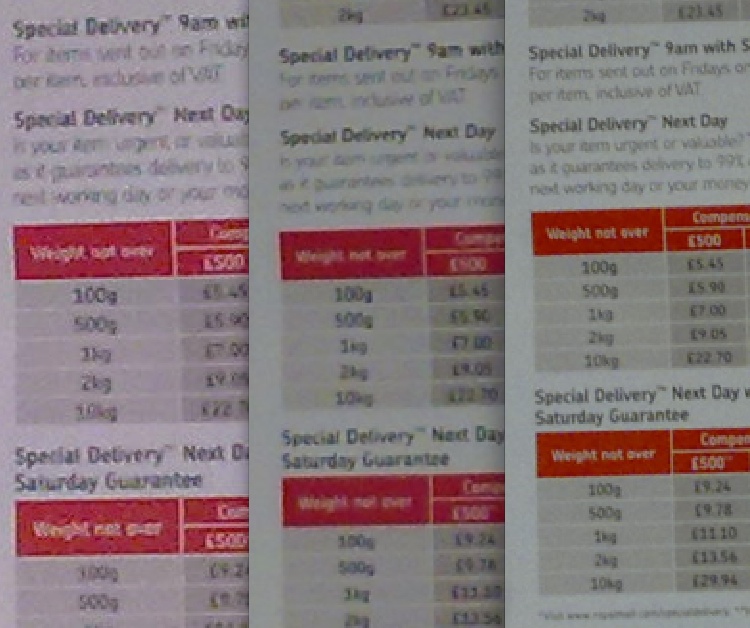
With no flash available, this is again a good test of raw sensor technology. There's a clear winner in the N8 yet again, even at this matched 5 megapixels, with the more sensitive sensor and absence of noise reduction making for readable text throughout. The N86 gets the red panel colour best of the three image crops, but much of the text is too blurred (noise reduction working where it really didn't need to) and the older N82 bests it for clarity.
Test 5: Indoors, flash enabled
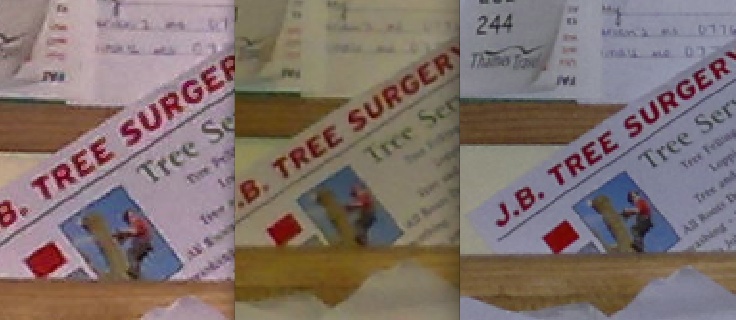
Here we have my noticeboard in the hallway, shot at 2 metres and cropped down by a factor of about 10. The N86 image looks the worst because of the relative weakness of the LED flash, but it's the contrast between the N82 image crop and the N8's that's most striking. Remember, these are both at 5 megapixels, yet the less sophisticated sensor in the N82, added to noise reduction algorithms that in this case do more harm than good, mean that its result is nowhere near as clear and as satisfying as the N8's.
It's true that by wider phone camera standards, the ageing N82 is still up with the best of them. Especially indoors, when the supremely bright Xenon flash produces stunning action capture. But everything's relative and the N86 just tops it overall, at least it does when allowed to stretch its legs out to full 8 megapixel resolution - and I'd still put the N86 easily in the top 10 camera phones in the world, almost three years after announcement.
What I'd hoped to demonstrate though, by this 5 megapixel test, was that the underlying sensor and accompanying electronics have improved over the years. We've seen this in competing smartphones like the 2011 Samsung Galaxy S II and even the 2010 iPhone 4, both of which produce photos in good conditions that are among the best in the world. But Nokia's camera technology has moved on as well and the N8's unit remains top of the tree, as I proved recently. And as Engadget's Myriam also proved with her test images.
What progress will be made in the next few years? I'd love a N8 successor with 4" CBD screen, an even bigger 12 megapixel sensor with back-side illumination and a brighter Xenon flash. I can dream....
Steve Litchfield, All About Symbian, 20 Sept 2011
